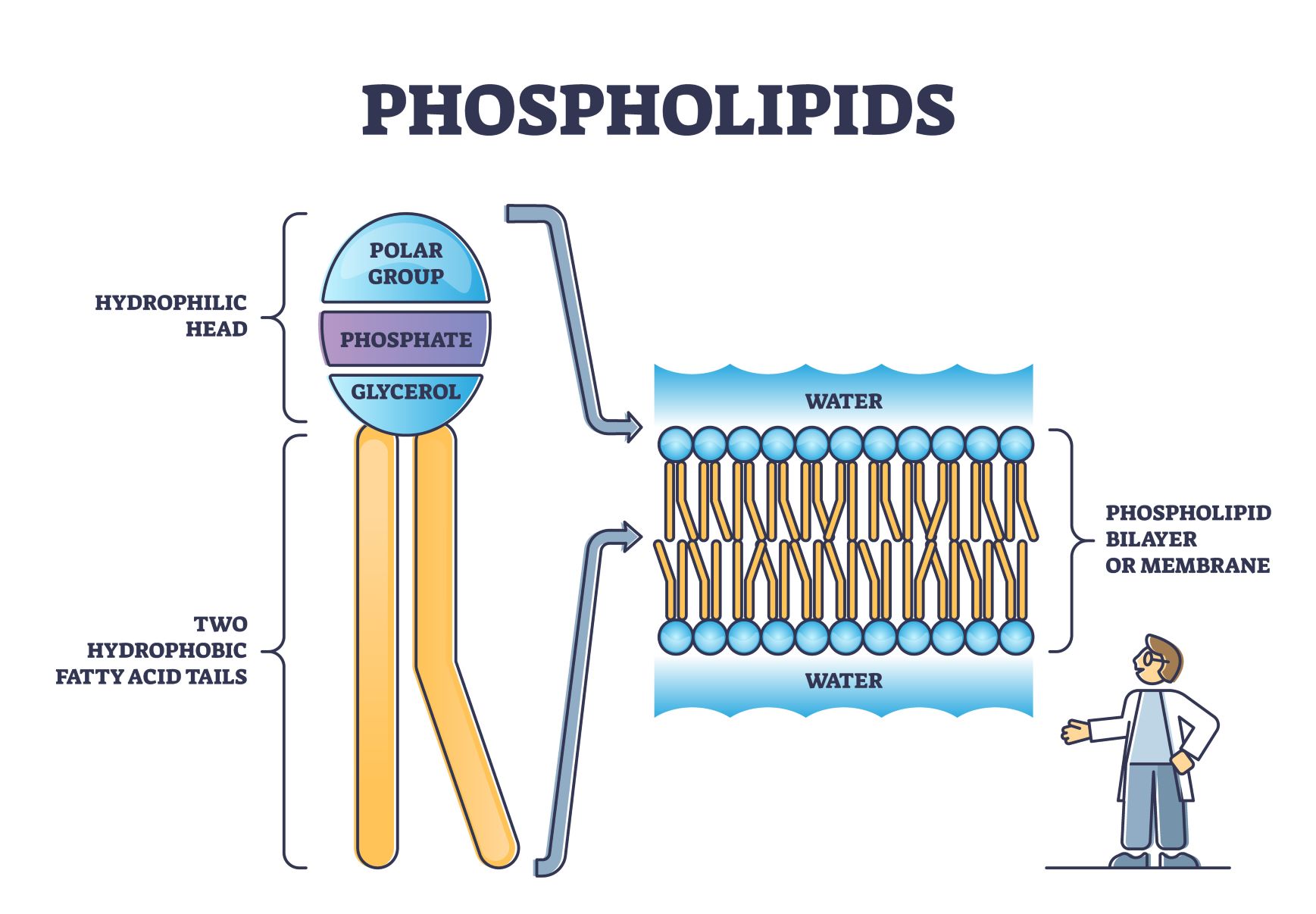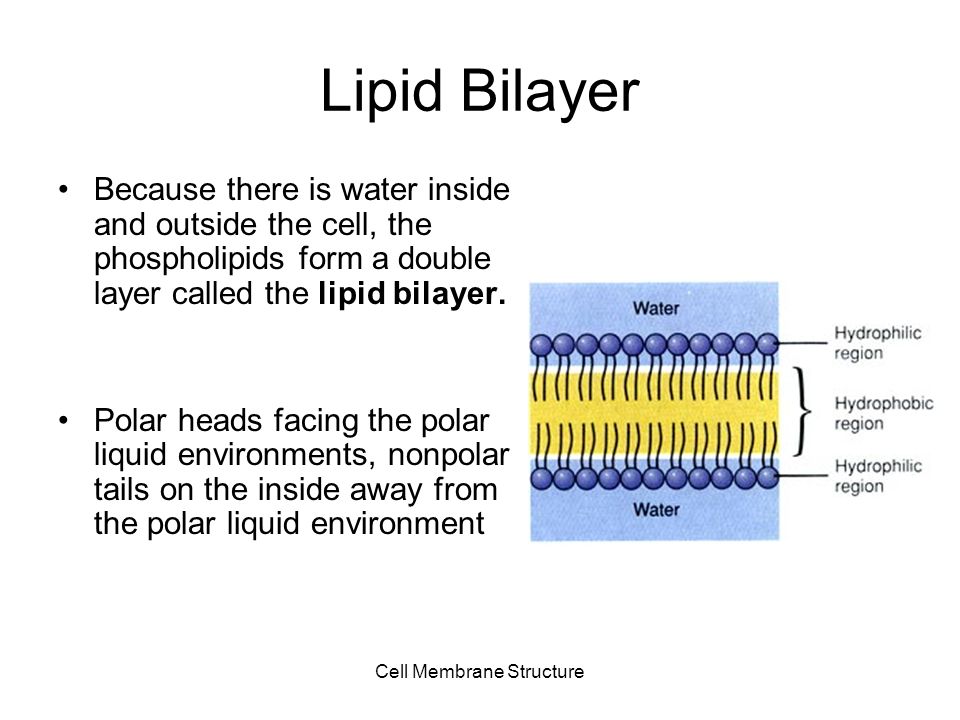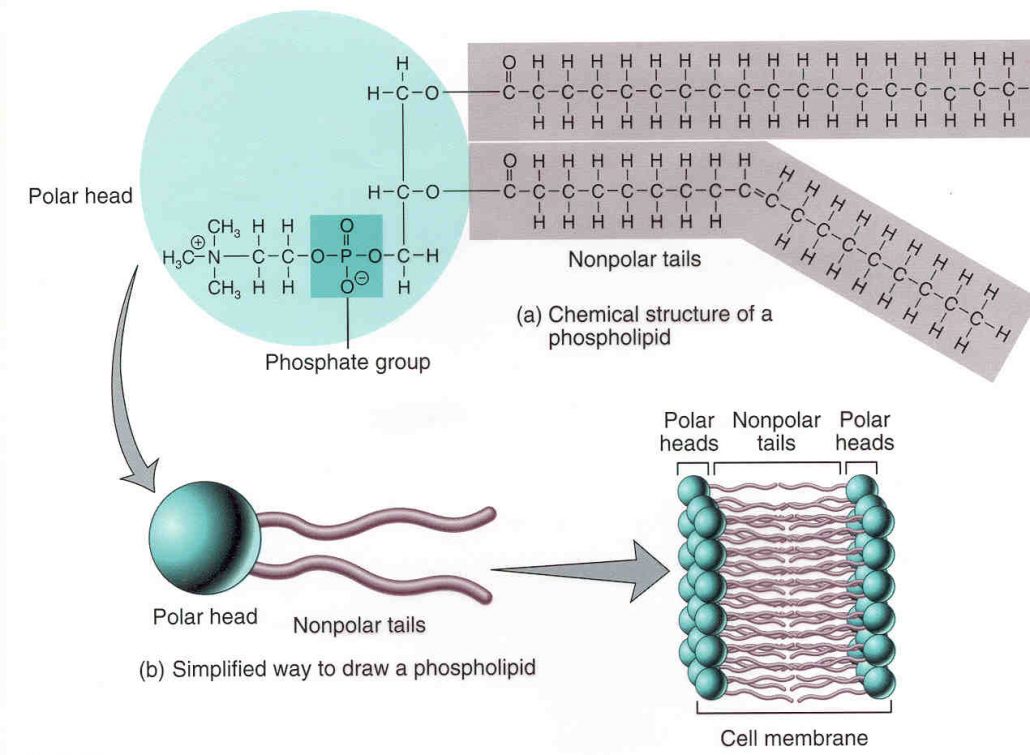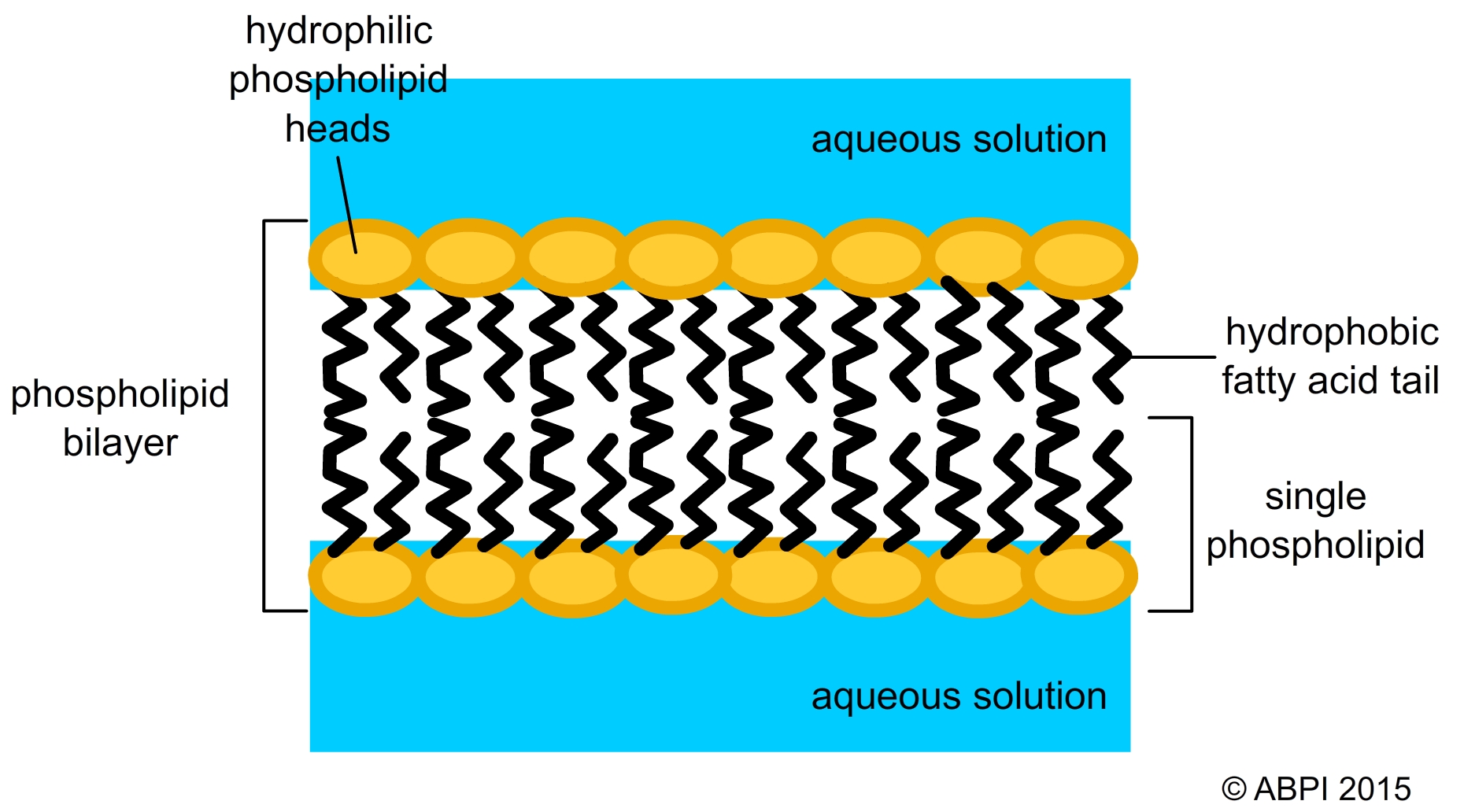Why Do The Phospholipids Form A Bilayer
Why Do The Phospholipids Form A Bilayer - Bilayers are particularly impermeable to ions, which allows cells to regulate salt concentrations and ph by transporting ions across their membranes. Due to the presence of hydrophobic fatty acid tails, a hydrophobic core is created when a phospholipid bilayer forms. This acts as a barrier. Why do phospholipids form bilayers? This means the polar hydrophilic group heads project. The inside and outside of a cell are aqueous environments.
This acts as a barrier. Why do phospholipids form bilayers? Due to the presence of hydrophobic fatty acid tails, a hydrophobic core is created when a phospholipid bilayer forms. This means the polar hydrophilic group heads project. Bilayers are particularly impermeable to ions, which allows cells to regulate salt concentrations and ph by transporting ions across their membranes. The inside and outside of a cell are aqueous environments.
The inside and outside of a cell are aqueous environments. Why do phospholipids form bilayers? Bilayers are particularly impermeable to ions, which allows cells to regulate salt concentrations and ph by transporting ions across their membranes. This means the polar hydrophilic group heads project. This acts as a barrier. Due to the presence of hydrophobic fatty acid tails, a hydrophobic core is created when a phospholipid bilayer forms.
Solved Why do phospholipids normally form a bilayer?The
Why do phospholipids form bilayers? Bilayers are particularly impermeable to ions, which allows cells to regulate salt concentrations and ph by transporting ions across their membranes. The inside and outside of a cell are aqueous environments. This acts as a barrier. This means the polar hydrophilic group heads project.
Phospholipid Bilayer Lipid Bilayer Structures & Functions
The inside and outside of a cell are aqueous environments. This acts as a barrier. Bilayers are particularly impermeable to ions, which allows cells to regulate salt concentrations and ph by transporting ions across their membranes. Due to the presence of hydrophobic fatty acid tails, a hydrophobic core is created when a phospholipid bilayer forms. This means the polar hydrophilic.
Phospholipids Biology for Majors I
Bilayers are particularly impermeable to ions, which allows cells to regulate salt concentrations and ph by transporting ions across their membranes. This acts as a barrier. Why do phospholipids form bilayers? Due to the presence of hydrophobic fatty acid tails, a hydrophobic core is created when a phospholipid bilayer forms. This means the polar hydrophilic group heads project.
10 Reasons Why Phospholipids Are Important The Important Site
The inside and outside of a cell are aqueous environments. Why do phospholipids form bilayers? Due to the presence of hydrophobic fatty acid tails, a hydrophobic core is created when a phospholipid bilayer forms. Bilayers are particularly impermeable to ions, which allows cells to regulate salt concentrations and ph by transporting ions across their membranes. This means the polar hydrophilic.
Why Do Phospholipids Form A Bilayer In Water slidesharetrick
Why do phospholipids form bilayers? This means the polar hydrophilic group heads project. Due to the presence of hydrophobic fatty acid tails, a hydrophobic core is created when a phospholipid bilayer forms. This acts as a barrier. Bilayers are particularly impermeable to ions, which allows cells to regulate salt concentrations and ph by transporting ions across their membranes.
Solved Why do phospholipids spontaneously form bilayer
This means the polar hydrophilic group heads project. Bilayers are particularly impermeable to ions, which allows cells to regulate salt concentrations and ph by transporting ions across their membranes. Due to the presence of hydrophobic fatty acid tails, a hydrophobic core is created when a phospholipid bilayer forms. The inside and outside of a cell are aqueous environments. Why do.
Phospholipid Bilayer Introduction, Structure and Functions
Why do phospholipids form bilayers? This acts as a barrier. Due to the presence of hydrophobic fatty acid tails, a hydrophobic core is created when a phospholipid bilayer forms. Bilayers are particularly impermeable to ions, which allows cells to regulate salt concentrations and ph by transporting ions across their membranes. This means the polar hydrophilic group heads project.
Phospholipids In Cell Membrane
This acts as a barrier. Due to the presence of hydrophobic fatty acid tails, a hydrophobic core is created when a phospholipid bilayer forms. Bilayers are particularly impermeable to ions, which allows cells to regulate salt concentrations and ph by transporting ions across their membranes. The inside and outside of a cell are aqueous environments. This means the polar hydrophilic.
Why Do Phospholipids Form A Bilayer In Water? YouTube
Why do phospholipids form bilayers? This means the polar hydrophilic group heads project. Bilayers are particularly impermeable to ions, which allows cells to regulate salt concentrations and ph by transporting ions across their membranes. Due to the presence of hydrophobic fatty acid tails, a hydrophobic core is created when a phospholipid bilayer forms. The inside and outside of a cell.
Phospholipids Expii
Why do phospholipids form bilayers? The inside and outside of a cell are aqueous environments. This means the polar hydrophilic group heads project. This acts as a barrier. Bilayers are particularly impermeable to ions, which allows cells to regulate salt concentrations and ph by transporting ions across their membranes.
The Inside And Outside Of A Cell Are Aqueous Environments.
Due to the presence of hydrophobic fatty acid tails, a hydrophobic core is created when a phospholipid bilayer forms. This acts as a barrier. This means the polar hydrophilic group heads project. Why do phospholipids form bilayers?









